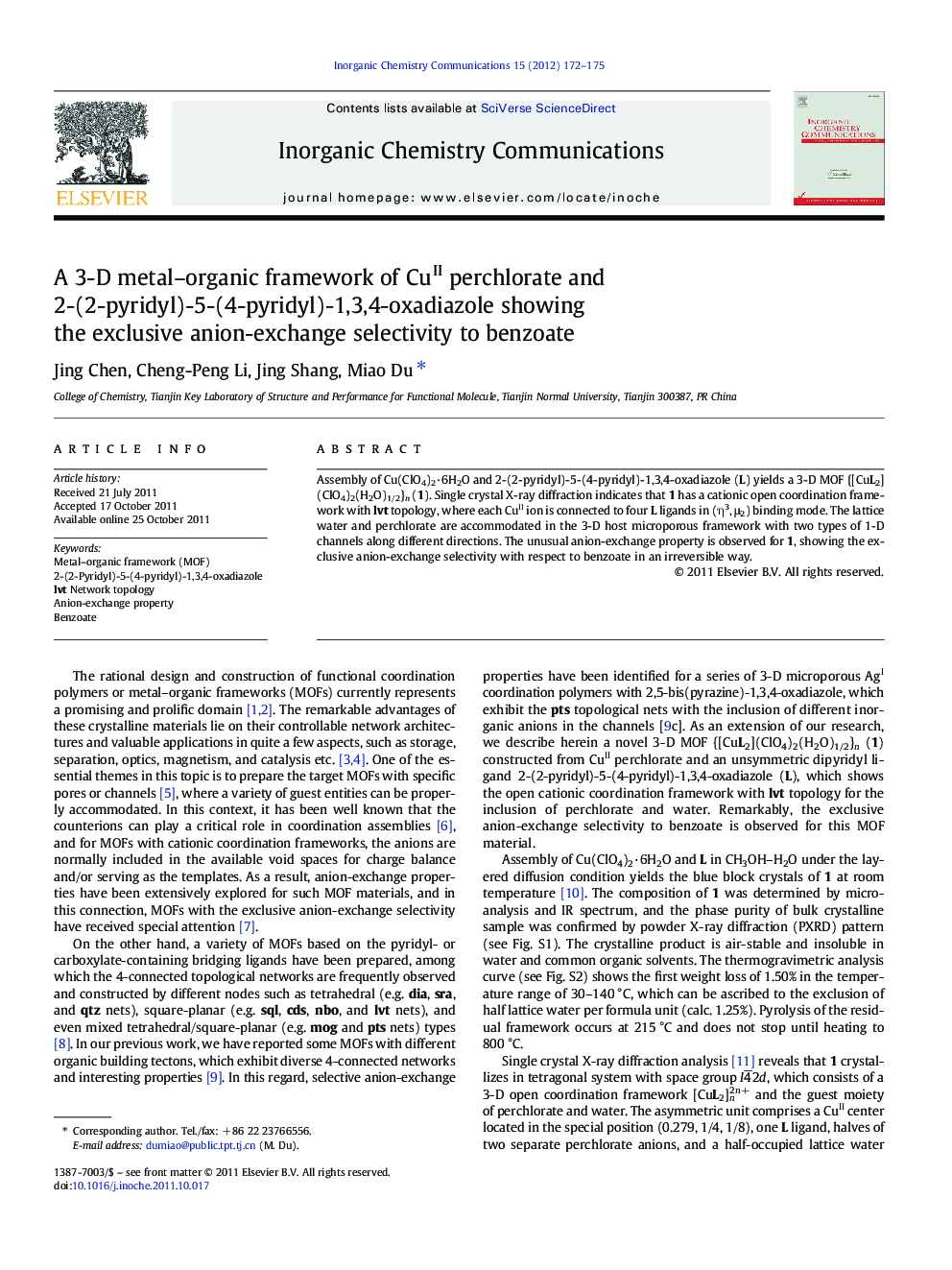| Article ID | Journal | Published Year | Pages | File Type |
|---|---|---|---|---|
| 1304021 | Inorganic Chemistry Communications | 2012 | 4 Pages |
Assembly of Cu(ClO4)2·6H2O and 2-(2-pyridyl)-5-(4-pyridyl)-1,3,4-oxadiazole (L) yields a 3-D MOF {[CuL2](ClO4)2(H2O)1/2}n (1). Single crystal X-ray diffraction indicates that 1 has a cationic open coordination framework with lvt topology, where each CuII ion is connected to four L ligands in (η3, μ2) binding mode. The lattice water and perchlorate are accommodated in the 3-D host microporous framework with two types of 1-D channels along different directions. The unusual anion-exchange property is observed for 1, showing the exclusive anion-exchange selectivity with respect to benzoate in an irreversible way.
Graphical abstractA 3-D metal–organic framework has been constructed from 2-(2-pyridyl)-5-(4-pyridyl)-1,3,4-oxadiazole and CuII perchlorate, which exhibits the exclusive anion-exchange property toward benzoate.Figure optionsDownload full-size imageDownload as PowerPoint slideHighlights► A 3-D CuII MOF with an unsymmetric ligand 2-(2-pyridyl)-5-(4-pyridyl)-1,3,4-oxadiazole is prepared. ► The cationic coordination network has an open lvt topological framework with the inclusion of perchlorate and water. ► This MOF material shows the exclusive anion-exchange selectivity to benzoate.
